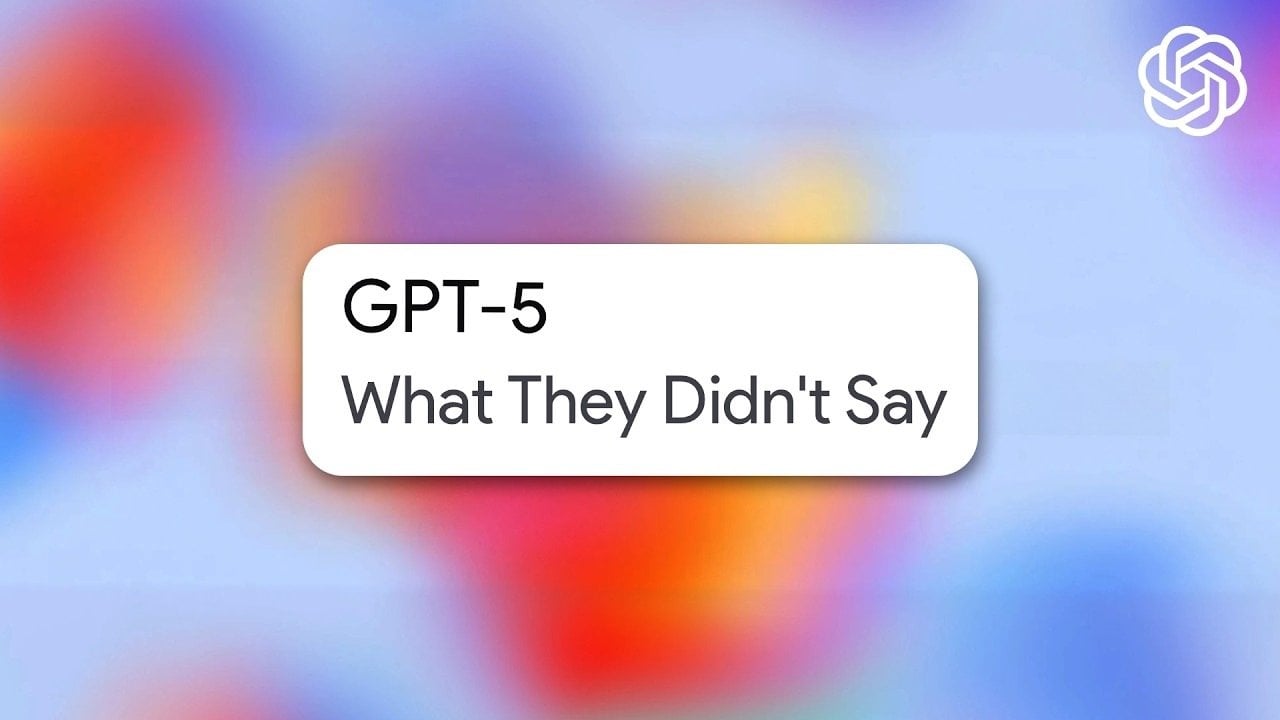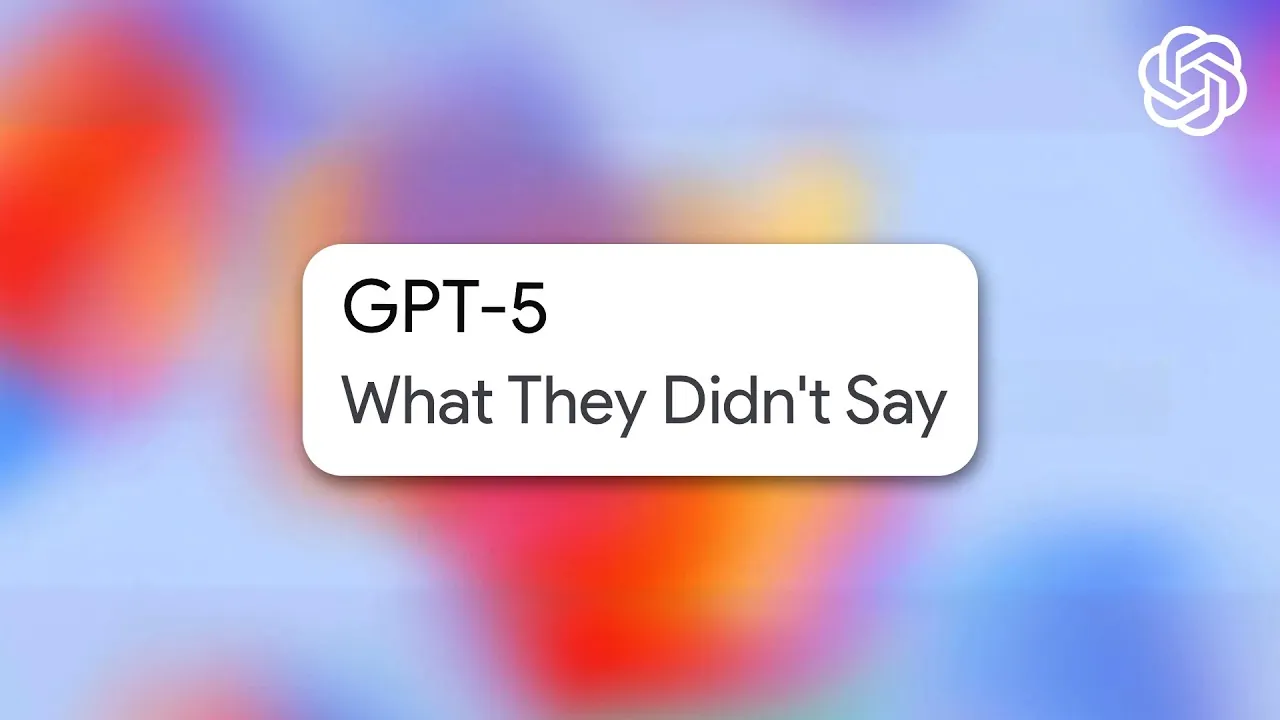ChatGPT 5 OpenAI's Secret AI Weapon : Efficiency Over Size – Geeky Gadgets

Geeky Gadgets
The Latest Technology News
By 
What if the future of artificial intelligence wasn’t just smarter—but more efficient, adaptable, and tailored to your needs? With the launch of ChatGPT 5, OpenAI has introduced a bold new chapter in AI evolution, challenging the notion that bigger always means better. Instead of relying on a single, monolithic model, GPT-5 uses a system of specialized models designed to optimize performance for both simple and complex tasks. This shift isn’t just about speed or cost—it’s about redefining how AI integrates into our lives, from solving intricate coding problems to crafting creative narratives with unparalleled coherence. But amidst the excitement, questions linger: Is GPT-5 truly the fantastic option it promises to be, or does it fall short of the innovative impact of its predecessors?
In this overview of the OpenAI keynote, Sam Witteveen explore the key innovations that set GPT-5 apart, including its new task-routing system, agentic loops for iterative problem-solving, and an expanded context window capable of processing up to 400,000 tokens. Whether you’re a developer looking to streamline workflows, a business seeking cost-effective AI solutions, or simply curious about the next leap in artificial intelligence, this release offers something for everyone. Yet, as with any major technological advancement, there are trade-offs and challenges to consider. Join us as we unpack the highlights, controversies, and potential of GPT-5—a launch that could reshape the way we think about AI’s role in our world.
TL;DR Key Takeaways :
OpenAI’s new ChatGPT 5 introduces a new task-routing system, redefining how AI processes queries. Unlike its predecessors, this system categorizes tasks based on their complexity, optimizing performance and resource allocation. For instance:
Another standout feature is the integration of agentic loops. These allow the model to iteratively refine its outputs, making it particularly effective for problem-solving and coding tasks. By incorporating feedback-driven mechanisms, GPT-5 enhances precision and adaptability, especially in technical domains.
Additionally, GPT-5 features an expanded context window, supporting up to 400,000 tokens with a maximum output of 128,000 tokens. This capability is ideal for tasks requiring extensive context, such as analyzing lengthy legal documents, conducting in-depth research, or generating complex creative content.
GPT-5 introduces several enhancements that cater to a wide range of industries and use cases:
Efficiency is another key improvement. Optimized compute usage enables faster response times and lower operational costs, making it more accessible to businesses of all sizes. To address varied user needs, OpenAI has introduced model tiers such as GPT-5 Mini and GPT-5 Nano, offering scalable performance at different price points.
Unlock more potential in GPT-5 system of models by reading previous articles we have written.
GPT-5’s performance benchmarks have sparked both excitement and skepticism. While it excels in many areas, some evaluations presented during the keynote were incomplete, leaving gaps in understanding its full capabilities. Competitors like Claude and Grok continue to challenge GPT-5, particularly in real-time and audio-based tasks, where GPT-5 currently lags behind.
One notable limitation is its knowledge cutoff, set at October 2022. This restricts its ability to provide insights on recent developments, which is a significant drawback in industries that rely on up-to-date information. Regular updates will be essential to maintain its relevance in fast-evolving fields.
GPT-5’s pricing strategy positions it as a cost-effective solution, appealing to businesses seeking affordability without compromising on quality. Its efficiency and specialized features may lead to the gradual phase-out of older models like GPT-4, as organizations transition to the latest technology.
However, public reception has been mixed. While many users praise its advancements in coding, creative writing, and technical problem-solving, others feel the release lacks the new impact of GPT-4. The keynote presentation, criticized for its overly staged format and technical errors, has also influenced perceptions, dampening some of the initial enthusiasm.
Despite these challenges, GPT-5 represents a significant step forward in AI development. Its task-routing system, agentic loops, and expanded context window distinguish it from earlier iterations, offering new possibilities for businesses and individuals alike.
GPT-5 stands as a testament to the ongoing innovation in artificial intelligence. Its focus on efficiency, scalability, and specialized capabilities positions it as a valuable tool across various domains. However, limitations such as its outdated knowledge base and lack of real-time API support highlight areas for improvement.
As the AI landscape continues to evolve, GPT-5’s long-term impact will depend on its ability to adapt and outpace competitors. For now, it serves as a powerful example of how AI can be refined to meet the diverse and growing demands of modern industries, setting the stage for future advancements in the field.
Media Credit: Sam Witteveen
Latest Geeky Gadgets Deals
Disclosure: Some of our articles include affiliate links. If you buy something through one of these links, Geeky Gadgets may earn an affiliate commission. Learn about our Disclosure Policy.